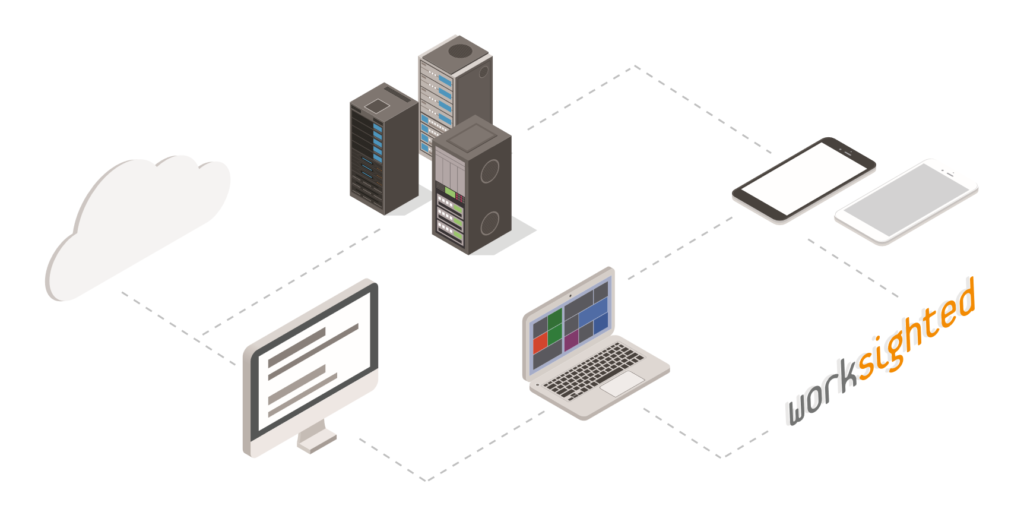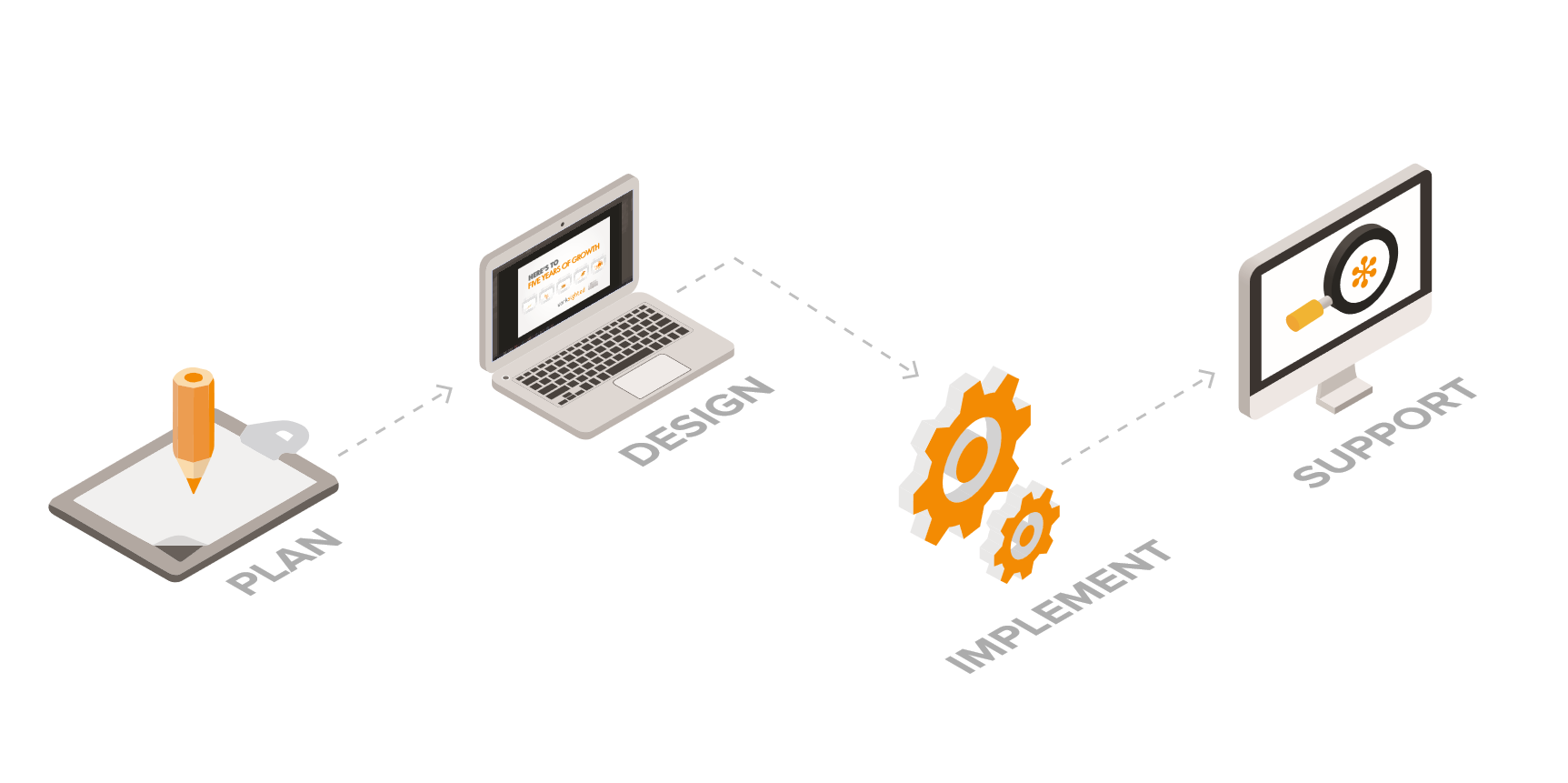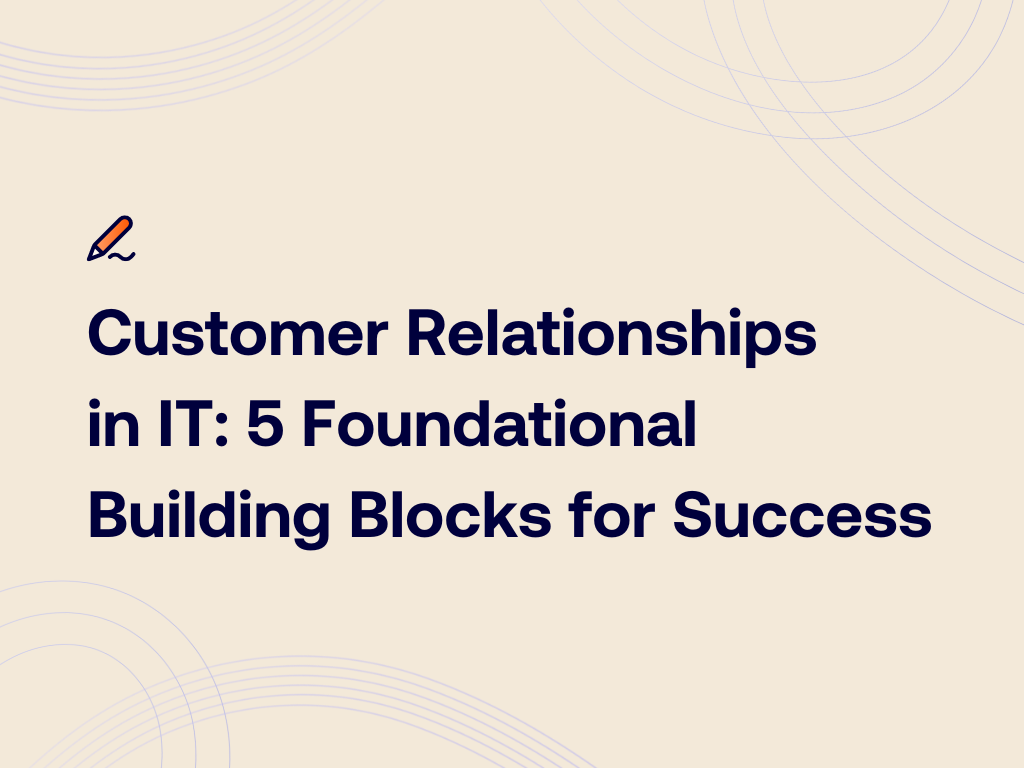Hybrid Culture – Three Ways to Maintain Office Culture With Remote Working
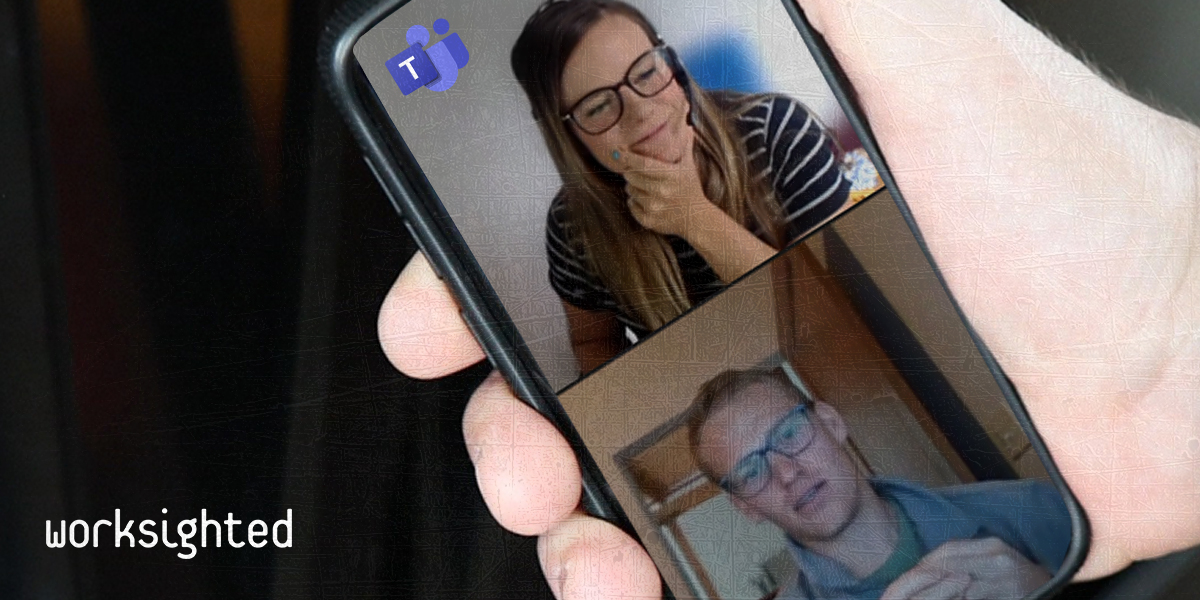
As the COVD-19 pandemic shifts into another phase, employees around the world are returning to their workplaces – either full-time or on a flexible, part-time, “hybrid” basis. Many business leaders are relieved, hoping for a return to pre-pandemic office culture – the glue that holds together workforces everywhere. But what does workplace culture mean when that workplace is as much digital as physical? How do you maintain a hybrid culture for a hybrid workforce?
We’ll look into that soon and provide our three top tips. But first, what are the cultural challenges faced by your new hybrid working environment?
Digital, Dispersed…. And Disconnected?
Hybrid work has presented a vast array of different experiences for employees, all depending on their individual circumstances. Some, hired during periods of all-remote working, may not ever have even visited their organization’s physical offices. Some may even be remaining remote for the foreseeable future, due to being based too far away from premises to commute.
For all the advantages of remote working, it’s not without pitfalls. A Canadian study released earlier this year found that a massive 83% of remote-working respondents felt disconnected from their workplace culture. When you’re not in the same room (or building) with your teammates from one day to the next – or even at all – it can be easy to feel disconnected and become disengaged.
Culture: Noticed When It’s Not There
It’s hard to define exactly what an organization’s culture is. Is it your vision and values? Your attitudes and behaviors? Maybe you’d just sum it up as your “vibe”?
As intangible as company culture can be, employees can nonetheless keenly feel when they aren’t part of it. This sense of inclusion, and your company culture itself, are formed via countless interactions that occur on business premises every day, in all kinds of places and occasions. And, in a hybrid working environment, many of those places and occasions are inaccessible to at least some of your employees – some or all of the time.
How to Make Hybrid Culture Really Work
So, how do you enable those valuable moments of informal “water-cooler chat” for everyone – including staff that may never even use the office water-cooler?
Here are some of our top tips for building hybrid culture in your organization:
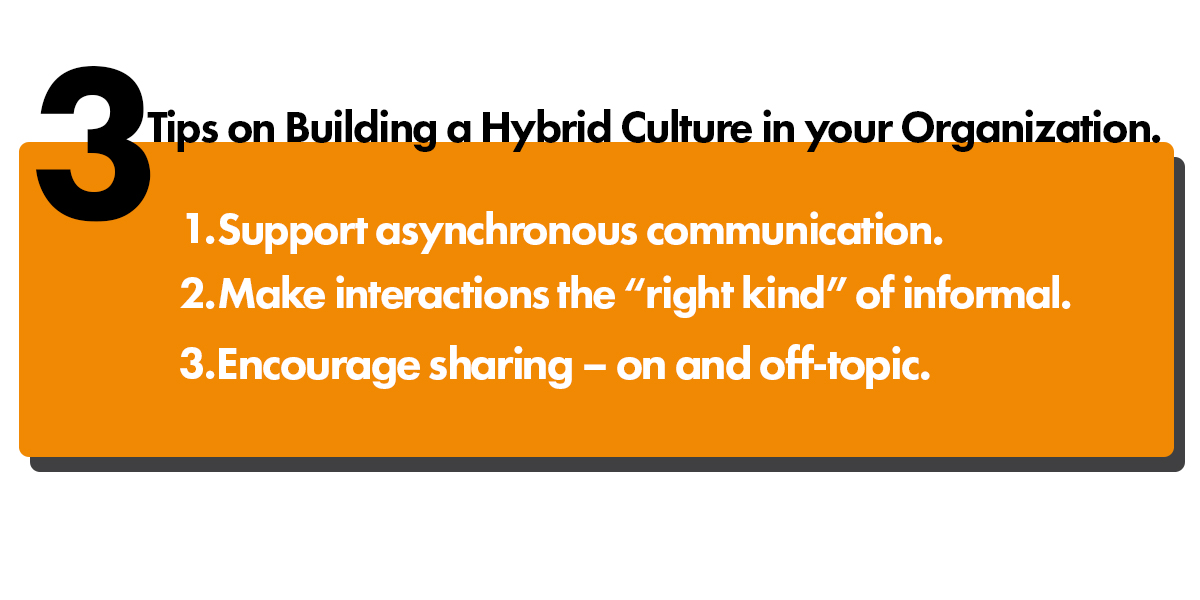
Let’s run through them all now.
1. Support Asynchronous Communication
Synchronous communication occurs when everyone is talking together in the same place, at the same time – e.g., next to the office water-cooler. However, asynchronous communication doesn’t rely on those two prerequisites – a specific place and time.
What does that mean? Well, look at online social networks. One person makes a post or a comment, then, later on, another will see it and reply. Conversations, discussions, and debates are carried out very well this way, across locations and time zones, by people in all kinds of roles.
Microsoft Teams Is a Platform for People to Get Together
Microsoft’s flagship collaboration platform Teams is a lot like a social network for your business. As well as helping people to get work done together, Teams can also perform a valuable role in fostering relationships and culture.
People have great ideas, great discussions, and great laughs on Teams. It’s also a platform gladly adopted by many because it’s easy to use and feels just like the consumer-focused social media and chat apps they use in their spare time. Teams can be a great hub for asynchronous communication and hybrid culture.
2. Make Interactions the “Right Kind” of Informal
We probably don’t need to describe what the “wrong kind” of informal is when it comes to a business context. Professionalism is always key, whether people are communicating digitally or chatting in the staff canteen.
However, company culture – the kind you want to nurture – happens when staff are at ease. And text chats and video calls can be a little awkward at times. It can all seem a little too formal, and nuance that would otherwise be conveyed by a look, a hand gesture, or a tone of voice may be lost.
Emojis and GIFs Put People at Ease
Just like consumers on social media and chat apps, Teams gives users the ability to use emojis or post fun stickers and GIFs from a pre-approved library. You can even add “reactions” (such as “like”, “surprised”, or “laughing”) to other people’s posts or comments.
This kind of functionality really puts the nuance back into interactions. Now, one person can easily see if another is being ironic, displeased, or stern. And, more than that – emojis are just fun. If you want to lighten the atmosphere and foster a relaxed, creative, and productive company culture, then they’re the way to go.
One important consideration: change has to be led from the top. Employees won’t embrace the informality of emojis and GIFs if they feel that management will judge them for it. So, maybe it’s time for the CEO (for instance) – who may never have used an emoji before in their life – to drop in a few digital grins or thumbs up. Your mileage may vary – but we think it helps.
3. Encourage Sharing – On and Off-Topic
Your digital workspace will, of course, include opportunities for employees to post and read content relating to ongoing projects. Savvy organizations will also use platforms like Teams for posting company news and useful information. But developing a good hybrid culture depends on more.
Your hybrid working environment needs to go beyond encouraging sharing that stays “on topic”. Culture, as we’ve explored, is more than just talking shop, and it also flourishes in the discussions that aren’t directly related to people’s everyday work. And, when people feel comfortable contributing off-topic, they will also be more likely to speak up with their next game-changing innovation for the organization.
Create Channels for off-Topic Talk
To foster an open culture of sharing, create Teams channels with the explicit purpose of sharing ideas, interesting links people have found, and more. You’ll be surprised how many employees will contribute when they feel encouraged. Amazing tangents of ideas can spring from the most unlikely sources, bonds between people are strengthened, and workers feel they get to know each other more than they would otherwise. These channels can be a real asset to hybrid culture.
Ready to Make Your Hybrid Culture a Success?
So, those are our three key ways to maintain your office culture with a hybrid workforce. We hope they sparked your interest – and help you succeed with hybrid culture. It can be a daunting prospect for many businesses, especially those who were staunchly on-premises until recent world developments threw a pandemic-shaped spanner into the works. But – you can do it.
And we want to help. At Worksighted, we’re dedicated to helping organizations to work better, whichever way they’re working. So, if you need help building the right hybrid working environment, harnessing the power of Teams or other tools, and making hybrid culture a success, let’s get started together.
Want to discuss how Worksighted can help you keep all your employees connected, whether they’re remote or in the office? Get in touch with us today.
